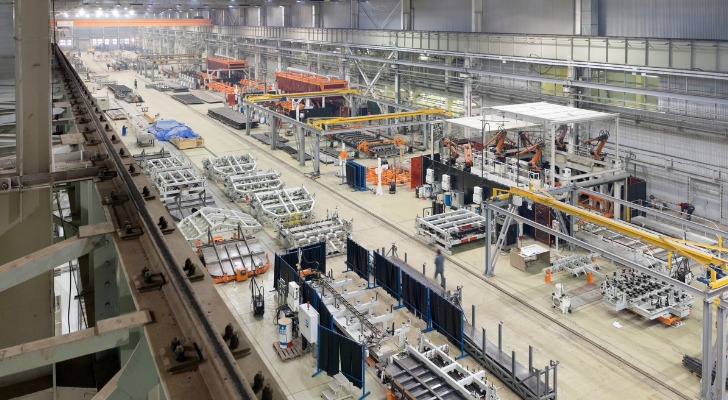For investors looking to diversify their portfolio, industrial REITs provide one possible option. These securities allow investors to buy into certain types of commercial real estate without requiring significant capital investment or hands-on management. Here’s a look at what industrial REITs are, how they can benefit investors and what to keep in mind before adding them to your portfolio. Work with a financial advisor if you have questions about how to build your portfolio for your future goals.
What Is a REIT?
A REIT, or real estate investment trust, is a company that owns, invests in and manages a number of different real estate assets. Investors can buy into an REIT by purchasing shares, the same as they would a mutual fund or publicly traded company.
As the assets owned and managed by the REIT earn a profit, investors recognize gains in two ways:
- The REIT pays investors regular dividends, as required by the IRS.
- Shares of the REIT may increase in value, benefiting investors if and when they choose to sell.
For this reason, a REIT is a worthwhile consideration for anyone looking to build passive income streams and long-term growth.
Understanding Industrial REITs

As the name suggests, an industrial REIT is a company that invests in and manages industrial properties. These may focus on only one type of property or a variety. The responsibility for managing the properties also falls onto the REIT company itself, rather than the investors. In turn, investors don’t have to worry about purchasing, developing or maintaining properties. The REIT company is also responsible for finding tenants, managing tenants, paying property taxes, collecting rent and more.
The types of properties an industrial REIT may buy include:
- Warehouses
- Distribution centers
- Manufacturing facilities and plants
- Offices and workspaces
As with other types of REITs, industrial REITs profit from the rent collected from tenants in the property. And according to IRS regulations, REITs must pay at least 90% of their taxable income to investors each year, in the form of dividends.
Benefits of Industrial REITs
There are several reasons to consider buying shares of an industrial REIT. Here’s a breakdown of the most important ones:
Counter-Cyclicality: Industrial REITs can help protect your portfolio from market downturns. Creating a well-diversified portfolio that’s protected against market fluctuations can be tricky. Adding industrial REIT investments may help, as these types of property tend to remain relatively profitable and necessary, even in a bear market or recession.
Relatively Passive: Industrial REITs are generally hands-off securities. They, like other REITs, allow investors to buy into real estate property without having to actually manage those properties. As a result, investors can simply enjoy the protections and potential growth without worrying about placing tenants or facilitating repairs.
Steady Income: Since REITs are required to pay out at least 90% of their annual taxable income to investors, they are often a good passive income source. That income stream can then be used to build savings, reinvest or even fund retirement.
Long-Term Leases: Tenants generally sign long-term leases on industrial properties. Unlike residential property and even some commercial buildings, tenants in industrial properties often plan to stay put for a long period of time. Long-term leases help reduce vacancies, limiting the REIT’s loss.
Risks of Industrial REITs
Of course, no investment is without its share of risk. Here’s what to keep in mind before investing in an industrial REIT:
Investments May Be Limited: Unlike residential or commercial REITs, there are only so many types of property that can be owned and managed by an industrial REIT. Generally, investors are limited to REITs that invest in warehouses, distribution centers and manufacturing facilities.
Sensitivity to Oversupply: Industrial tenants tend to stay put for longer periods of time. Because of this, existing vacancies can be lengthy, especially in a stagnant economy or recession. If a market is experiencing an industrial property overload, the problem may be worse.
Bottom Line

Adding industrial REITs to your portfolio can be one way to further diversify your investment portfolio, all while building passive income streams. These hands-off investments may be less exciting than other types of REITs, but often involve stable properties with long-term tenants. Besides the income, each can potentially grow the value of their investment portfolio.
There are other types of REITs you can invest in if industrial REITs don’t seem as appealing to you. For instance, there are residential REITs, healthcare REITs and more.
Tips for REIT Investing
- Not sure whether industrial REITs belong in your retirement investment portfolio? Consider working with a financial advisor who can help you optimize your portfolio. Finding a qualified financial advisor doesn’t have to be hard. SmartAsset’s free tool matches you with up to three financial advisors in your area, and you can interview your advisor matches at no cost to decide which one is right for you. If you’re ready to find an advisor who can help you achieve your financial goals, get started now.
- The key to building wealth and planning for a successful retirement is creating a strong investment portfolio that hedges against market downturns, inflation and even recessions. Adding industrial REITs can be one great way to achieve all three while also earning potential dividends.
Photo credit: ©iStock.com/ElenaPhoto, ©iStock.com/gorodenkoff, ©iStock.com/alvarez
